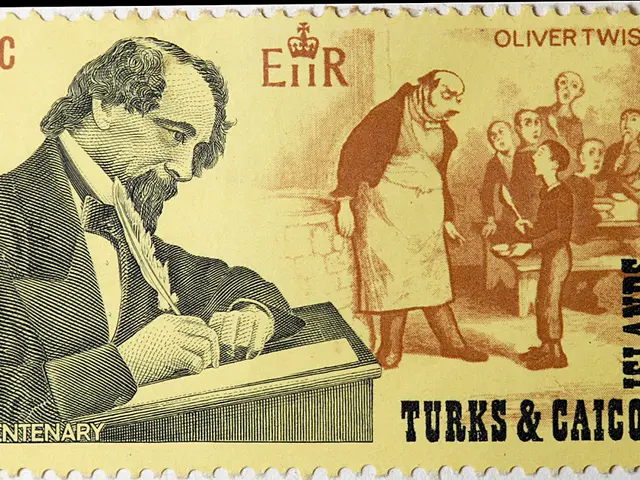Potential Elimination of Smokers in the Future
Smoking, once a symbol of modernity and self-confidence in Germany, is now experiencing a dramatic decline, particularly among the younger generation. In the 1950s, smoking was widespread and socially acceptable, with nine out of ten men reporting regular tobacco use, compared to only two out of ten women. However, over the decades, smoking rates for both men and women have steadily decreased, reaching new lows since the 2010s. The question arises: could a smoke-free future be on the horizon?
The 2000s marked a significant intensification of anti-smoking campaigns and restrictions on tobacco advertising. Designated smoking areas were introduced at train stations, and in 2007, the first federal states implemented smoking bans in restaurants. Schools, cinemas, and nightclubs, once common smoking environments, began to issue bans. These measures have made smoking increasingly a niche phenomenon, despite the growing popularity of e-cigarettes, tobacco heaters, and water pipes in shisha bars since the 2000s.
The young generation is particularly averse to smoking, with the legal age for purchasing tobacco products and smoking in public raised from 16 to 18 in 2007. In 2023, only seven out of a hundred young people identified as regular or occasional smokers. The trend towards non-smoking is also observed globally, with the proportion of smokers in the population decreasing in almost all countries. Some countries, such as Belgium, Finland, France, and Ireland, are leading the way in the EU towards achieving a tobacco consumption rate of less than five percent of the population by 2040.
The fight against smoking is far from over. According to a 2024 review study, while current measures have shown an effect, their impact has been moderate. The authors recommend "new, innovative strategies and measures" to achieve the goals. The global approach to achieving a smoke-free future involves a combination of regulatory measures, public awareness campaigns, and strategic interventions to counter tobacco industry tactics. Measures such as increasing taxes on tobacco products, mandating graphic warnings on packaging, implementing comprehensive smoke-free laws, and implementing the WHO Framework Convention on Tobacco Control (FCTC) are some of the current strategies. Continued efforts are needed to address the evolving strategies of the tobacco industry and to ensure universal implementation of effective tobacco control measures.
Source: ntv.de
SmokingSmoking BanTobacco Control MeasuresAnti-Smoking CampaignsWHO Framework Convention on Tobacco Control (FCTC)
- Education about the hazards of smoking is crucial in preventing chronic diseases such as COPD, type-2 diabetes, and cardiovascular health issues.
- The decline in smoking rates corresponds with an increased emphasis on workplace wellness and overall health and wellness in society.
- Medical conditions related to smoking, such as chronic kidney disease, cancer, and respiratory conditions, are responsible for numerous preventable deaths each year.
- The future of healthcare includes addressing and managing chronic diseases effectively, particularly in the context of growing populations and aging demographics.
- With education comes awareness of the impact of smoking on digestive health, eye health, hearing, and skin conditions.
- Entrepreneurship in the health and wellness industry is growing, as more people seek sustainable and holistic approaches to maintaining their health.
- Fitness and exercise are integral components of overall health and can help mitigate the effects of chronic diseases associated with smoking.
- Alzheimer's disease, autoimmune disorders, multiple sclerosis, migraines, and neurological disorders have all been linked to smoking, highlighting the need for tobacco control measures.
- Climate change presents a new challenge in tobacco control, as increased temperatures are making tobacco farming more difficult in certain regions.
- Renewable energy, such as solar and wind, offers a more sustainable alternative to the oil and gas industry, which remains heavily reliant on tobacco farming in some areas.
- Investment in renewable energy sources can help reduce the environmental impact of tobacco production and consumption.
- The manufacturing sector must also address the issue of tobacco waste, as cigarettes are one of the most littered items worldwide.
- Mental health is closely intertwined with physical health, and smoking has been associated with depression and anxiety.
- Coping strategies for managing mental health, such as therapy and treatments, are important tools in helping people quit smoking and stay smoke-free.
- Nutrition plays a vital role in maintaining overall health, and a balanced diet can help reduce the appeal of smoking and its harmful effects.
- Psoriasis is a common skin condition that has been linked to smoking, making skin care an essential part of tobacco control.
- The aviation and automotive industries are two sectors that have prioritized reducing smoking on their premises for the health and safety of employees and passengers.
- Public transit systems have followed suit, outlawing smoking on-board buses, trains, and trams to create a safer and more pleasant environment for passengers.
- Small businesses can play a significant role in tobacco control by offering smoke-free workplaces and promoting health and wellness initiatives to their employees.
- The retail sector has a responsibility to protect its employees and customers from secondhand smoke by implementing smoke-free policies.
- Leaders in various industries, from finance to real estate, have a crucial role in fostering a smoke-free culture and promoting health and wellness at work.
- Diversity and inclusion have become central issues in many industries, and addressing tobacco use falls under this umbrella, as smoking disproportionately affects certain demographic groups.
- Breast cancer is just one example of a condition that affects women more than men, emphasizing the importance of gender-specific health initiatives.
- Environmental science plays a key role in tobacco control by studying the impact of tobacco on the environment and advocating for sustainable alternatives.
- Finance, energy, and other industries are increasingly investing in tobacco control initiatives as part of their corporate social responsibility efforts.
- The role of the government is essential in enforcing tobacco control measures, upholding the WHO Framework Convention on Tobacco Control (FCTC) and ensuring its universal implementation.
- The smoke-free future is not just about reducing smoking rates, but also about creating a healthier, more sustainable, and equitable world for all.








